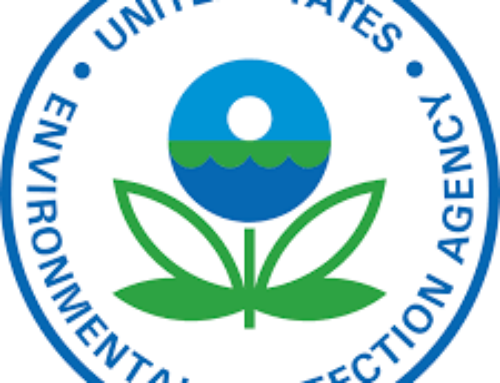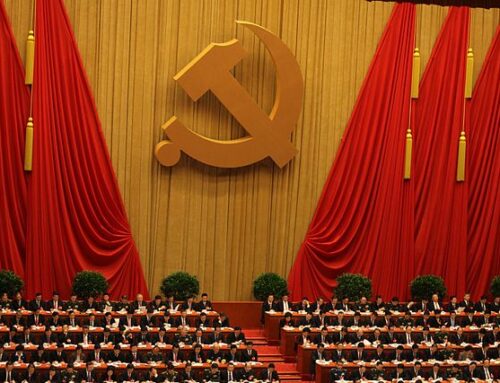For Immediate Release:
September 15, 2014
Contact:
Craig Richardson
[email protected]
NEW REPORT: FOIA’d Emails show outside ‘green’ lobby groups staffed up, collude with Obama EPA, calling rules’ legality into question
Obama’s EPA in collusion with “green” lobby groups — Report details the conflicts of interest, “unalterably closed minds”, internal activism and influence of outside interest groups on the Obama Administration EPA. Documents raise questions re EPA rules legality
Washington, D.C. – The Energy & Environment Legal Institute (E&E Legal) released a report today revealing and piecing together dozens of emails obtained under the Freedom of Information Act (FOIA), which lay out in detail EPA’s collusion with senior activists within environmentalist pressure groups, and proving the real thinking about the intent behind and impact of EPA’s “climate” regulations.
Far from the required recusing to avoid the appearance of a conflict, EPA filled its senior political ranks with green pressure group activists, continuing their life’s work and coordinating with former colleagues from their new positions in government. These emails show the groups sharing jokes about EPA assurances that it isn’t waging a war on coal, and gloating about the courts serially siding with EPA as it rewrites federal environmental law. More important, they show the special role and undue influence these relationships provided, the very sort of influence the Obama Administration once disavowed.
“EPA is permitted to regulate; but, not these people, not this way,” said E&E Legal’s Chris Horner who filed the FOIA requests and related litigation which produced most of the emails set forth in the report, which also includes and discusses many emails extracted from EPA by the Competitive Enterprise Institute (CEI) adding context to E&E Legal’s findings.
The report details many instances of lobbyists for “green” special interest groups helping steer EPA regulations and permitting decisions, and providing advocacy materials for use by former colleagues now inside the EPA who then dutifully circulate the advocacy materials to colleagues. The collusion ranges from orchestrating public hearings, the EPA and Sierra Club teaming to write a U.S. Senator’s public statement on the shared agenda, and even specifically targeting individual power plants which green groups wanted to prevent under any new EPA standards.
“It’s disturbing,” said Dr. David Schnare, a lawyer and a scientist with decades of experience as an EPA employee, now E&E Legal’s general counsel. “There needs to be a clear line between special interests and government. Current EPA officials are ignoring that line entirely,” he added.
Released emails show the orchestration of EPA’s “climate” agenda, plainly predetermined despite the requirement of open-minded review, including its “endangerment” finding.
E&E Legal’s report singles out dozens of emails, of which it has even more equally illustrative exemplars, from many thousands of documents. These were obtained pursuant to FOIA requests which the report also details EPA delayed and stonewalled until E&E Legal had to litigate to force disclosure, however bridging and often heavily redacted.
These show the improperly close collaboration between certain environmental groups and senior EPA officials, many of whom came to EPA from just such groups. The relationship between Michael Goo, recently head of the EPA Office of Policy and a former Natural Resources Defense Council (NRDC) lobbyist, and John Coequyt, a top Sierra Club lobbyist, is particularly close, to the point that Coequyt worked to ensure Goo participation in meetings important to Sierra, while Goo ensured his colleagues paid particular attention to Sierra’s concerns and materials.
The emails discussed in the report demonstrate how Coequyt supplied research and advocacy materials directly to individual activists within EPA, even helping EPA keep a score for “internal use” of coal plants to shut down. He advised EPA officials to ensure “zombie” coal plants, i.e. plants that had been planned and may one day be built, remain shelved avoided creating complete logs of their interactions through various means, including, e.g., meeting with Goo at the nearby Marriott Hotel near the EPA headquarters (circumventing detailing their discussions in EPA’s visitor logs, where people most logically would look), and when he was otherwise in the building including for numerous meetings with senior officials Goo facilitated had such a direct pipeline into the Agency that when he was on vacation his Sierra Club team would plead with EPA friends for updates.
In another case, EPA press staff collaborated with a Sierra Club lobbyist to write Sen. Jeanne Shaheen’s (D-NH) statement on the “climate” agenda for a “roundtable” event EPA, Sierra Club, and Sen. Shaheen participated in.
In multiple instances, green lobbyists provided EPA with their polling on the shared priorities, were directly involved in deciding where EPA would hold public hearings, and ensuring supportive crowds. Further, EPA repeatedly gave green groups a leg up in preparing comments intended for the administrative record on important regulations. This meant the green groups were able to submit comments ahead of any members of the general public, or other interested parties, even though the comments in question were submitted before the record was open for comment by the general public. EPA employees also submitted special interest group comments directly if those groups failed to do so themselves.
The special relationship goes all the way to the top. Lisa Jackson, aka “Richard Windsor”, used her private Verizon account to email directly, impermissibly off the record, with green lobbyists like Sierra Club Michael Brune, which the public only now knows because she clumsily instructed one lobbyist to contact her there, and forwarded a Brune email to EPA colleagues seeking to “amplify” Brune’s work.
There is evidence of substantial correspondence between current EPA Administrator Gina McCarthy and green group leaders, which she references in emails that were obtained, though what she references have not been produced even though they were clearly responsive to E&E Legal’s FOIA requests. Still, it is clear from what has been obtained that she gives green lobby groups a “heads up” to save them from “embarrassment.”
“The exclusion of voices from the process other than those already predisposed to agree with and promote EPA’s agenda, its leadership’s former compatriots in ‘green’ lobbying groups, is the precise and illegal opposite of good governmental practices,” said Craig Richardson, E&E Legal’s Executive Director, “These people are not allowed to regulate this way.”
The report extensively documents these and many more abuses by current EPA leadership and calls for a new process, free from conflicts of interest, worthy of public confidence and legal legitimacy, giving all stakeholders an equal voice in the process. Until that occurs, the EPA regulatory process faces legal challenges and deserves only public distrust.
________________________________________________________________________________
The Energy & Environment Legal Institute (E&E Legal) is a 501(c)(3) organization engaged in strategic litigation, policy research, and public education on important energy and environmental issues. Primarily through its petition litigation and transparency practice areas, E&E Legal seeks to correct onerous federal and state policies that hinder the economy, increase the cost of energy, eliminate jobs, and do little or nothing to improve the environment.
The FME Law Clinic provides litigation and research services to qualified clients. We concentrate on cases involving landmark free-market pro-environmental litigation; use of open records and data quality laws to force greater governmental accountability and transparency; and, cases that allow the Clinic to help create the next generation of free market oriented attorneys.
-30-





